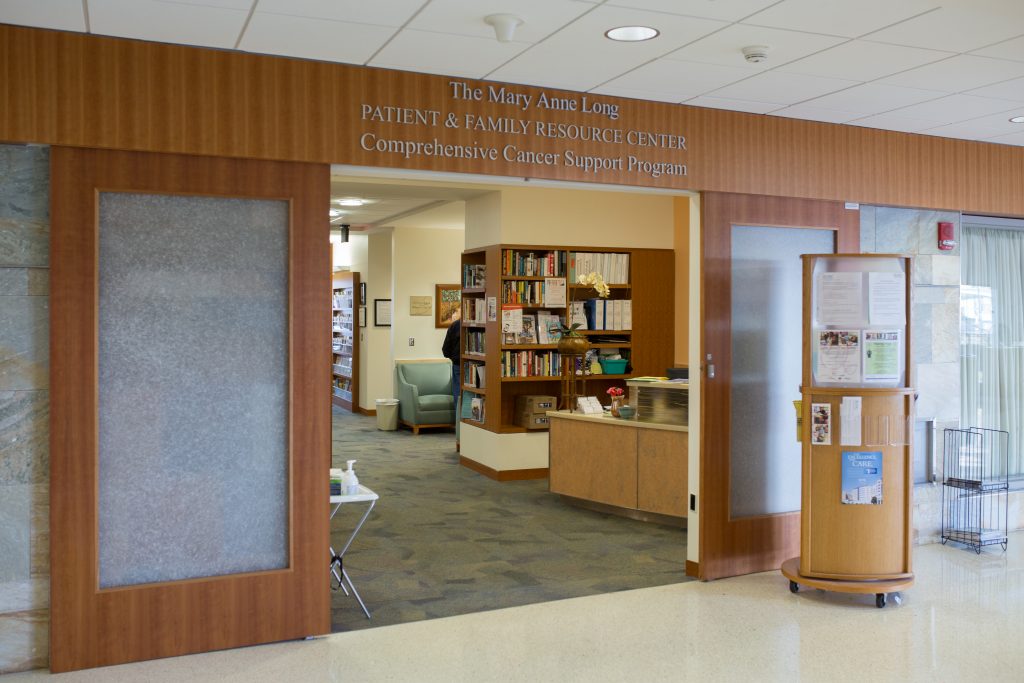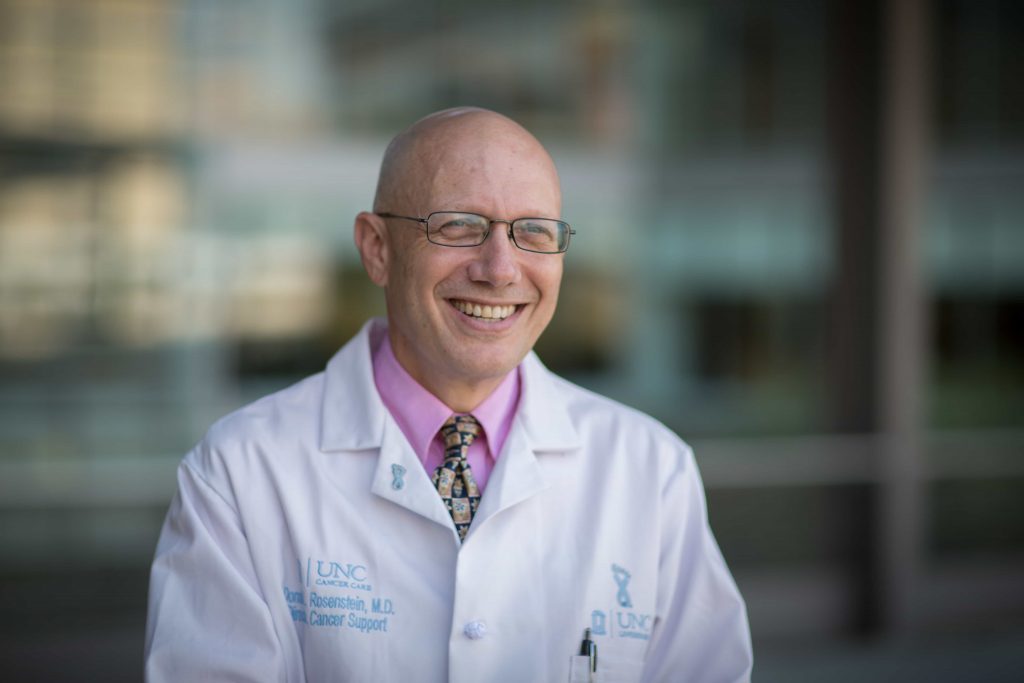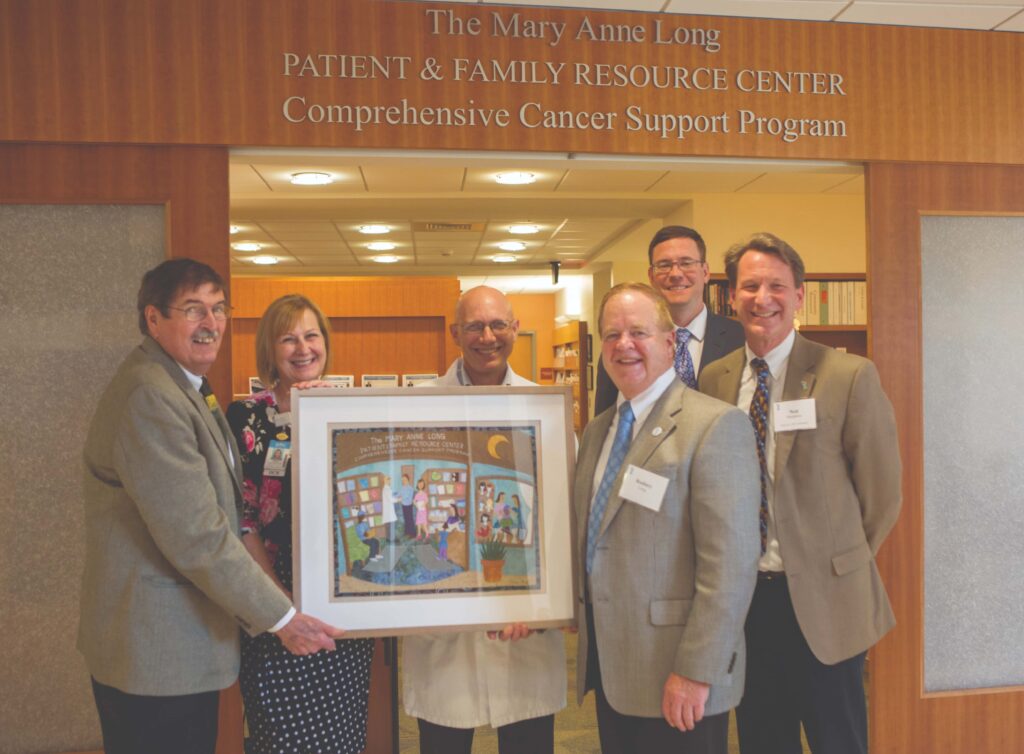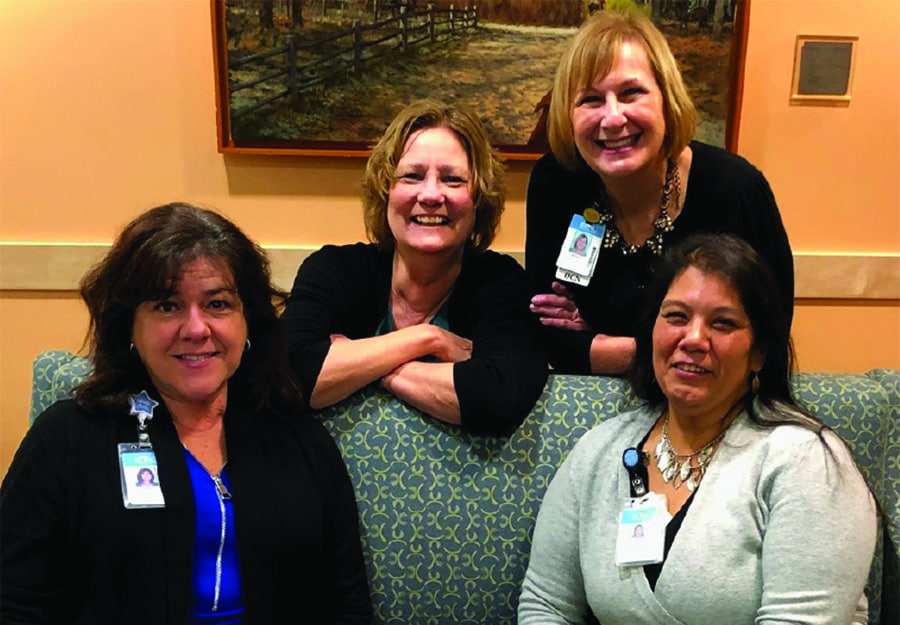For 30 years, the North Carolina Cancer Hospital’s Mary Anne Long Patient and Family Resource Center (PFRC) has offered patients and their families expert help, solace and friendly faces. The PFRC is a key resource under the UNC Lineberger Comprehensive Cancer Support Program, which helps guide patients through every step of the cancer journey, from diagnosis to survivorship, and everywhere in between.

The PFRC opened in 1991, when former UNC Lineberger Communications Director Dianne Shaw wanted to offer patients and their families a central location where they could find education, information and resources on cancer. Shaw teamed up with Anne Washburn, MPH, to create a space in the Gravely Building, the precursor to the N.C. Cancer Hospital, that, though small, was great in scope and idea. They soon added key players to their leadership, including Tina Shaban, BSN, RN, OCN, as director and Pam Baker, the first resource and navigation coordinator.
During the past two decades, Shaban and Baker have worked together to envision and oversee the transition from a program based in a small closet in the Gravely Building to a robust cancer support center that opened in the N.C. Cancer Hospital, the clinical home of UNC Lineberger, 2009.
“This was a real time of transition, but it was easy for us to put two and two together. Pam as a survivor, and me as a caregiver. We focused on those needs,” Shaban said. “We simply listened to what the families were saying they needed, and we figured out how to make it happen.”
Presence and visibility

When plans were announced to build a dedicated cancer hospital in the early 2000s, UNC Health leaders were open to creating an inviting space for the PFRC that would be centrally located in the main lobby of the hospital and make it accessible and visible to all patients and caregivers as they arrived for care, something Donald Rosenstein, MD, CCSP director, said hospital leadership delivered.
“Leadership at UNC Lineberger and the North Carolina Cancer Hospital realized it was a priority to have the PFRC right there front and center so that it’s next to the outpatient pharmacy and on the ground floor,” he said. “I do think space reflects priorities in institutions. I think the most special part of the PFRC has always been the dedication of the people who worked there. They are really passionate about patient care.”
Philanthropy and community support
The center has proved to be immensely helpful to patients and their families the past three decades. For the family of Mary Anne Long, they were so moved by the care and support the center provided her that they were inspired to give back after her death.
Rodney Long, CEO of Long Beverage, together with his daughters, wanted to do something for patients after they lost their wife and mother, Mary Anne, to cancer. The family wanted Mary Anne’s memory to live on and help other cancer patients during their cancer journeys. Their efforts led to the founding of the Brighter Image Boutique, which offers wigs for cancer patients.

“That’s one of the reasons I decided to try to do this and get involved,” Long said. “[Mary Anne] always wanted to help people. She wanted to help in whatever small way she could.”
The wig program is one of the most successful aspects of the PFRC. In its infancy, Shaban said, patients donated their wigs, and they’d be cleaned and given to another patient. For a lot of patients, though, appointments are more than just cosmetic.
“When you’re experiencing a physical side effect like hair loss, it is a reality check. We offer a lot of emotional support at those appointments,” Shaban said. “Donors helped us provide that service at no charge to our families.”
In 2017, the PFRC was renamed the Mary Anne Long Patient and Family Resource Center to reflect the ongoing efforts of the Long family’s commitment to help the center provide support to patients on a larger scale and with more resources.
Philanthropy has been a key component in advancing the PFRC, helping Shaban and her team realize their vision for patients and families.
“It became possible for us to envision our dreams because others were saying this was important,” Shaban said. “The combo of an idea and a team who helped us financially was really critical. They understood that care was not just administering a medical component of cancer care. You looked at the whole patient and the family.”
“Most, but not all, of the services provided by the PFRC and the CCSP are free to patients. So the boutique and the educational programs and support groups and navigation and financial assistance and legal services are free,” Rosenstein said. “We are critically dependent on philanthropy.”
Adapting to change while remaining true to the mission
The COVID-19 pandemic has changed things at the PFRC, with the faculty and staff adapting to a more virtual care model, while still successfully providing support for patients and their families. The PFRC also launched a remarkable, new patient navigation program, led by Sharon M. Bigelow, RN, MSN, ANP, OCN, and Libby Hart, RN, BSN, CHPN, both former PFRC team members and nurse navigators.
“The PFRC adds a warm and helpful human touch to the cancer treatment experience and that’s always been the case,” Rosenstein said. “It makes the cancer hospital stand out as a very special place.”

The demands for PFRC services are higher than ever, and changes made during the pandemic have proven so successful, that they will continue in a post-COVID landscape. And the resource center continues to adapt and change to meet the needs of an evolving patient population, while still remaining true to its mission.
“The PFRC is really a model program for cancer support,” Rosenstein said. “I have always thought of the PFRC as the window to the CCSP. It’s the physical space, and people may wander in. When they do, we want to increasingly personalize the supportive care services that people are connected with.”
Rosenstein hopes to see those connections increase in the future, and he said a top priority is to expand the center’s capacity to reach patients who otherwise may have trouble finding the PFRC or accessing some of its services. He also sees cancer care models changing down the line, to better incorporate the benefits of CCSP and the PFRC.
“I want to continue to more broadly serve the needs of the patients in North Carolina,” he said. “I want our work to continue to be data driven and integrated with patients’ cancer care. I don’t want the resource center to just be where you go for comfort. I want to be in close communication with other oncology services and providers. This is part of comprehensive care.”
Before the pandemic, renovation plans were on tap to help open up the space, making it more inviting and welcoming and helping patients know that this was a space just for them, without an appointment or a schedule. Shaban has recently retired from her long-time role with the PFRC and said she envisions a sort of living room, complete with comfortable seating and a fireplace to really help set the scene for patients and invite them into a space that feels like home.
“The PFRC started out as a library-type environment,” Shaban said. “It’s changed a lot over the years. PFRC is the only physical space where any patient, family members and any community member can come in and immediately receive service. It’s a big deal. There’s a beautiful benefit to the space.”
